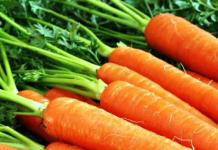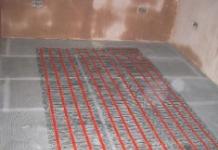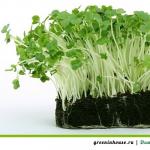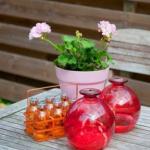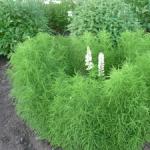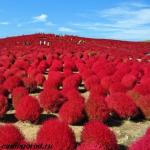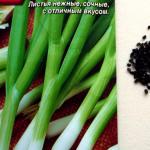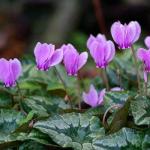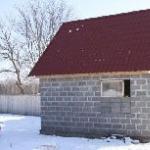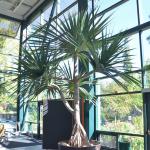A tasty and healthy root vegetable, beetroot rightly occupies one of the first lines in the list of vegetables consumed all year round.
To date, a huge number of varieties and hybrids sold in retail chains have been bred. To help you figure out which beet seeds are worthy of being sown in your garden, let's do a little review. Consumer indicators of varieties are especially taken into account, namely: the presence of rings, the color of the pulp, keeping quality, and attitude to cold.
For ease of navigation in the article, the varieties are arranged alphabetically, depending on the group (early, mid-ripening, and so on).
early ripe
Early ripe varieties of beets give a harvest within 80-90 days from the moment of mass germination of seeds. Bolivar - the development of Dutch breeders, gives evenly rounded fruits with an average weight of 250 g. Productivity is high. The pulp has a dark red color, juicy, with high taste qualities. Preserved in winter without losing quality.

photo: © "beetroot bolivar" / Uralsky-dacha resident.rf
Boltardi F1 - rounded even roots, the average weight of which is 200 g. The color of the pulp is maroon, close to purple, the fruit itself is tender and juicy. The variety shows resistance to most diseases of root crops.

Bon Bon - has a minimum amount of leaf mass. The fruits are round, smooth, thin-skinned. Red pulp has good taste.

Wodan F1- high-yielding Dutch hybrid, ripening in an average of 80 days. The fruit is spherical, smooth, weighs up to 500 g. The flesh is bright red, juicy, with a pronounced taste.

Gribovskaya flat A 473- high-yielding. Flat-round fruits weighing up to 400 g have red-violet flesh with rings. Shooting resistant. Egyptian flat- rounded, with slightly flattened root crops weighing up to 400 g. The flesh is red-violet, tender, juicy, has a good taste for universal culinary purposes. The variety gives a stable yield of about 5 kg per square meter. Drought tolerant, undemanding to soil. Suitable for winter storage.

photo: © "Egyptian flat" / gavrishseeds.ru
Captain - with a spherical root crop weighing from 160 to 300 g. The flesh has a rich red color and is juicy. The variety is resistant to stalking. Productivity up to 8 kg. Suitable for winter storage.

red ice- spherical fruits weighing about 300 grams with juicy pulp; ringing is weak. With standard care, the square is harvested within 5 kg of the crop.

Red ball - forming round fruits weighing over 200 g. It is cold and drought resistant, has moderate immunity, is not prone to growing stems. Yields up to 6 kg and is well stored all winter.

Take note! "Recommended by experts for use in children's and dietary nutrition."
Red Ball improved - yield up to 6 kg. The fruits are round-smooth, average weight 200 g, the flesh is dark red, juicy and delicate taste. An indisputable advantage is that beets are cooked quickly, ideal for preparing baby food. Storage transfers without loss of taste and commercial qualities.

photo: © "improved red ball" / sedek.ru
Libero - the main advantage of which is the rapid formation of root crops (early harvest for beam products). Round fruits gain weight up to 220 g, have juicy pulp of rich red color. The variety is high-yielding, with good keeping quality. Moderately resistant to stem formation, with high yields it gives up to 6 kg.

Matryona- beets with cylindrical roots weighing 300-350 g. The flesh is red-violet with a slight annularity. The variety is indifferent to brown rot of root crops, phomosis. Stored for a long time.

Monocle- single-sprout beets. The mass of the rounded fruit reaches 270 g. It tolerates frost and excess moisture. The flesh is dark burgundy with a sweet taste.

Incomparable A 463 - forms rounded or flat-rounded fruits weighing up to 400 g, this determines the high yield of the variety - up to 7 kg / sq.m. The pulp is dark red in color, tender, juicy, tasty. The variety is cold-resistant, indifferent to cercosporosis, does not shoot and is well stored. Justifying its name, the variety is considered one of the sweetest.

Single-sprout high-yielding- about 10 kg per square meter, the mass of one beetroot reaches 600 g. Large root crops are covered with a thin skin, juicy and without loss are stored at home for several months. Disease resistant variety.

photo: © "one-sprout" / agrofirmasemena.ru
Siberian flat- as the name implies, its fruits are flat, with dark purple pulp, weighing up to 400 g. It tastes great, is resistant to cold and to characteristic diseases of root crops.

photo: © "Siberian Flat" / Uralsky-dacha resident.rf
Cold resistant 19- gives up to 7 kg. Podzimny and early spring sowing is possible. The tubers are flat-round, smooth, medium-sized - up to 220 g. The pulp of the fruit is juicy. It is used in all types of culinary use and long-term storage. Bloom resistant.

photo: © cold-resistant 19 / ailita.ru
On a note! “Reviews about the variety from gardeners in Siberia are only positive, but you can grow it everywhere: it gives excellent performance in all areas of risky farming.”
Mid-season
Mid-season varieties include varieties in which the fruits reach technical maturity within 80-100 days. Crimson Ball- spherical fruits have an average weight of about 200 g. Dark-burgundy pulp is juicy, tasty, quickly cooked. Stably productive variety, whose fruits retain an excellent presentation for about 7 months.

Boyar- high-yielding beets. The spherical fruit usually weighs up to 300 grams. It is noteworthy that the size of the fetus can be increased by regular fertilizing.

Lady- the standard weight of rounded root crops is about 200 g. The flesh is red, ringing is weakly expressed. The variety is resistant to stem formation, is cold-resistant, tolerates drought or prolonged rains without loss. Stored for a long time.

bohemia - forms root crops weighing 300-500 g, rounded or slightly flattened. Dark burgundy flesh is tender and tasty. The variety is immune to cercosporosis, does not shoot. Well kept for a long time. Does not require thinning when growing.

Bona- a variety resistant to diseases. Productivity reaches 7 kg/sq.m. Root crops are round and medium-sized, 200-300 g, with juicy tender pulp, lie well until spring.

Bordeaux 237 - gives a good harvest in any weather and is relatively heat-resistant. Root crops form round, weighing from 200 to 500 g, with dark red pulp. Productivity reaches up to 8 kg/sq.m. Tolerates frost and light frost, heat and drought. Included in the top ten sweetest varieties.

Borsch - grows well on soils of any type. It gratefully responds to top dressing, increasing the yield up to 9 kg / sq.m. The pulp is red, soft, pleasant taste. It is used most often in the preparation of first courses (name!) and boiled in salads.

Virovskaya single-seeded - with distinctive qualities - cold resistance and resistance to the formation of peduncles. The fruit is round-flat, weight ranges from 300 g, the flesh of the fruit is dark red. Well kept for a long time.

photo: © Virovskaya one-seeded / gavrish.ru
Detroit - forms neat calibrated beets with a standard weight of about 250 g. The variety is characterized by a moderate leaf rosette, resistant to bolting. Yields up to 7 kg.

“Although Detroit beetroot has low disease resistance, increased lighting and watering requirements, reviews of it in all regions are positive. This is one of the mass-cultivated varieties.”
Detroit round - Italian selection. Root crops are small, rounded with a smooth skin of medium thickness. The color of the juicy pulp is dark red. Each fruit weighs an average of 200 g. Cold-resistant, resistant to flowering.

photo: © "Detroit round" / ncsemena.ru
Red Bogatyr- a variety that gives high yields of an average ripening period. The fruits are cylindrical, thin-skinned. With an average weight of one tuber of 400 g per square of beds, they give 8-10 kg.

photo: © "red hero" / gavrish.ru
Red Ruby - characterized by high yield, cold and drought resistance. The pulp of rounded root crops is painted in red-ruby color, tender. Without loss, it remains until spring.

Fau - resistant to stem formation. The fruit is cylindrical with an average weight of 350-380 g. It has juicy burgundy flesh. Suitable for winter storage.

Larca - native of Holland. The weight of a rounded fruit reaches 300-320 g. The pulp is rich red, juicy.

Interesting! “There is evidence that beets of this variety have the highest ability to rid the human body of accumulated radionuclides.”
Masha- Differs in stable productivity. Fruits are dark red, cylindrical, about 600 g. Resistant to diseases.

Milady F1- one-seeded mid-ripening beets with cylindrical fruits. The average weight of one fruit is 380-450 g, the flesh is red, with a harmonious taste. Harvest up to 6 kg/sq.m.

Mona- single-sprout with cylindrical fruits. The main characteristics of root crops: average weight from 250 to 330 g, length up to 20 cm, diameter 5 cm. One square meter gives up to 7 kg of high-quality root crops.

Mondoro F1- a real gift of domestic breeders to the inhabitants of Siberia. The hybrid is resistant to diseases and pests. Medium-sized fruits, within 270 g, purple pulp of a delicate sweet taste, juicy.

Mulatto - according to numerous reviews, it is considered ideal for storage. It forms fruits of medium size and weight (200-300 g) with red juicy pulp. Harvest of medium size, up to 4 kg.

Pablo F1- medium-sized tubers, thin-skinned. The pulp is red, juicy. Beets are resistant to bad weather conditions, but require watering in hot weather. Indifferent to soil fertility.

On a note! “According to the feedback from Ural gardeners, the Pablo variety is a good solution for obtaining stable quality crops in the region.”
Podzimnaya A 474 - suitable for winter and early spring sowing. The fruits are dark red, have a flat-round shape, from 200 to 300 g. The flesh is dark red, juicy, tender. Resistant to cold, well preserved.

photo: © Podzimnaya A474 / ailita.ru
Cylinder - with cylindrical thin-skinned roots, Dutch selection. The average fruit parameters are diameter 5-9, length 10-16 cm, weight up to 250 g. The flesh is dark red in color and juicy. resistant to beet diseases. Storage transfers well. The average yield per square meter is 10 kg.

late ripening
Technical maturity occurs on the 100th day or more after the full emergence of seedlings. Betina - Czech selection. Forms rounded roots with a standard weight of about 200 g. Dark red flesh is dense and juicy. Resistant to typical diseases. Well preserved.

Kuban borsch 43 - forms oval fruits up to 450 g. The pulp of the fruit is red with pronounced rings. It has a mild sweet taste. Ideal for making borscht. Stored for a long time.

photo: © "Kuban borsch 43" / gavrish.ru
Commander - with cylindrical thin-skinned roots. The pulp is red, juicy. Resistant to bloom. Universal culinary purpose. Suitable for winter storage.

Patrick- single-sprout beets. Fruits are round in shape, weighing up to 200 g. Juicy burgundy flesh with a slight annularity. Keeps a trade dress and tastes for a long time.

Renova- high-yielding beets - 9 kg / sq.m. The fruits are long, even cylindrical in shape, the flesh is juicy, dense, dark purple. At storage keeps tastes and a trade dress within 6 months.

Salad - Ideal for long winter storage. Forms a rounded root crop with an average weight of 250 g. Juicy dark red pulp. Yield up to 4 kg/sq.m

Varieties for the Moscow region
For the correct selection of beet seeds, which will ensure a good harvest and its preservation for the long winter months, one feature of the root crop is taken into account: the plant needs a long daylight hours. Early and medium ripening periods fully satisfy this requirement.
On a note! “Cylinder-shaped beet root crops accumulate less nitrate.”
Bordeaux 237, Boltardi, Gribovskaya flat, Single-growth, Egyptian flat, Red Ruby, Libero, Mona and Podzimnyaya described above are quite old, well-deserved varieties. But there are also new varieties of beets, zoned specifically for the Moscow region. There are also many hybrid seeds on sale that are successfully grown in the Moscow region. In addition to the Water and Pablo mentioned above, these are:
- Belushi;
- Bettollo;
- Bohan;
- Ronda;
- Subet;
- Action.
Varieties for Siberia and the Urals
The harsh climatic conditions of the regions require a special approach to the selection of beet seed material. First of all, gardeners pay attention to the cold resistance of seeds. Further, preference is given to varieties of early and medium ripening.
The best seeds for planting in open ground of the following varieties suitable for Siberia and the Urals:
- Pushkinskaya Flat;
- Red ice;
- Siberian flat;
- Mulatto;
- Wodan;
- Bordeaux 237;
- Polar Flat;
- Bikores.
Varieties for the South of Russia
The region is favorable for crop production. You can plant those varieties that are zoned for Siberia, if they are to your liking. But you have to keep in mind that the sunny warm South is not only fertile lands, but also arid steppes and unpredictable foothills. Climatic conditions change already at a distance of 50 km. Therefore, plant growers are guided by a particular place of cultivation, choosing seeds of either drought-resistant varieties, or tolerate dampness well, or (happy people!) Own taste.
- Bordeaux 237;
- Captain;
- Kuban Borschevaya;
- Harmony.
Varieties for winter storage
It is generally accepted that early ripening vegetables, including beets, are not suitable for winter storage. They last until the onset of cold weather, when they are used in canning. But it is the early and middle varieties of beets that are the sweetest, they contain more sugars and are of particular nutritional value.
Maximally combine valuable nutritional qualities and the proven ability to preserve them throughout the winter varieties:
- Renova;
- Libero;
- Salad;
- incomparable;
- Detroit.
Cold-resistant varieties
Beetroot has one unpleasant feature: it begins to germinate at a temperature of 3-5°C, but low temperatures provoke an acceleration of vernalization processes in the sprouts. This means that the first-year beetroot will eventually release an arrow and begin flowering to the detriment of the formation of the root crop that gardeners need. For this reason, a significant number of seeds are planted in open ground when stable heat is established. Due to premature vernalization, most varieties are not suitable for winter sowing.
Seeds of varieties are spared from this disadvantage:
- Cold resistant 19;
- Podzimnaya A-474;
- Gribovskaya flat 473;
- Red ice;
- Masha.
They are planted in late autumn and early spring, growing seedlings under light agrofiber.
Table beetroot
Beet as a cultivated plant of high nutritional value has been known since ancient times. It is divided into four main groups: dining, sugar, fodder and leaf - chard. The forage variety is of interest to those who need forage to feed their livestock. Sugar goes to the production of sugar, which is both difficult and unprofitable at home.
Table beetroot is a vegetable that adorns the cuisine of most peoples of the world. It is for her that every owner tries to allocate at least a few square meters of his garden. Agricultural technology for growing table beets - planting seeds in open ground, care, top dressing - is simple.

Planting beets with seeds in open ground in most cases is carried out in the spring, when fairly stable warm weather is established, usually this is the second half of May (2-3 weeks earlier in the southern regions). In cold regions, when planting beet seeds in spring, it is required to take simple measures to protect the future crop: namely, cover the crops with agrofiber until the seedlings get stronger. Beets grow on almost all types of soils, but the best yields are obtained on loams, sandy loams, loamy fine-cloddy chernozems. Areas with heavy clay soils should be avoided, especially with a close occurrence of groundwater. When planting seeds in spring, the seeding depth is 2 cm, when planting in winter - 4-5 cm. Row spacing - from 30 to 45 cm, depending on the variety. The planting step is 5-8 cm. A more troublesome, but also more reliable way is to grow through seedlings, especially for early varieties. Planting of beet seeds begins 3-4 weeks before the expected date of transplanting seedlings into open ground.
Care activities - weeding, loosening, thinning of plantings - are carried out during the growing season. Thinning beet plantings is carried out twice per season. The first time is at the stage of two true leaves, leaving sprouts at a distance of 4 cm. The second thinning is when 4 to 6 leaves are formed. The root crop by this time should grow to at least 3 cm in diameter. Such adolescent beets can already be used in cooking along with tops - in salads and soups.
Note! “Thinned out beets only in cloudy weather, in extreme cases at dusk. The soil must be moist. Ideally, if it had rained before.
Watering is carried out according to the weather: beets (most varieties) tolerate drought more easily than excess moisture. Plantings are fertilized with potash fertilizers, but they are used carefully: this is often fraught with cracking of root crops. Nitrogen is used in extremely small quantities at the beginning of the growing season. In the future, their use leads to the growth of tops and loss of yield, and in the worst cases - to the defeat of Fusarium.
Bird droppings (solution 1:12) or mullein (1:8) are considered the best fertilizers. Copper, boron and molybdenum are essential components of top dressing. To do this, use lime milk - 200 g is diluted in a bucket of water. Feed at least twice a season. First, after the second thinning, then - when the tops begin to close, blocking the aisles.
Varieties without light rings

The rings on the beet cut are not a decorative element that appeared at the behest of nature or man. This is the result of violation of the rules of agricultural technology or extreme weather conditions. The best ten varieties of beets that endure life's hardships and do not form rings were selected according to the reviews of summer residents without division into ripening periods and regardless of the shape of the root crop:
- Pablo F1;
- Detroit;
- cylinder;
- Cardinal - the hybrid does not form rings even under extreme growing conditions (drought, temperature changes);
- Mulatto;
- Kestrel is a hybrid with mild ringing in the early stages of maturation;
- Egyptian Flat;
- Mona;
- Bull Blood.
An excess of chemical dressings also often leads to ringed fruits.
Dark varieties
The pulp of beet fruits comes in different colors - shades of pink from medium to deep ruby, red, burgundy to purple. It is generally accepted that the darker the color, the tastier and healthier the beets. And this is not a delusion. Deep burgundy color is due to a large amount of anthocyanins - natural antioxidants, antiseptics and vasoconstrictive substances.
You can buy seeds of sugar and fodder beets at specialized seed stations, which are located on the territory of each agricultural region. Beetroot seeds for open ground are also purchased there. But the sale is carried out in bulk by weight from a kilogram (price from 1200 rubles / kg). For one garden, this will be a lot, even if the purchase is made for the future - the germination of beet seeds lasts from 3 to 5 years. Therefore, it is advisable to contact retail stores. The trading network offers a large selection of beet seeds for open ground, including the sweetest ones - the best in many culinary indicators. The choice is made by the manufacturer. Agricultural firms "SeDek", "Aelita", "Gavrish" enjoy an excellent reputation. The next most famous are “Poisk”, “Kolchuga”, which also offer good quality seeds to buyers. You can order seeds from catalogs via mail or in an online store with payment upon receipt of the goods.
Be carefull! When choosing seeds from online catalogs, do not trust the sweet promises of unknown companies. It is quite possible that instead of the desired ruddy beauty, “that other fruit” will grow in your garden.
According to the ripening period, beets are divided into early, mid-ripening and late. For winter storage, the second and third are suitable. Early and ultra-early beets are good because they ripen in 2-3 months, but they lie poorly.
Using personal experience and feedback from gardeners from the forum, I will describe the best productive varieties of beets.
The best early beet varieties: description, reviews, photos

Beet Egyptian flat, characteristic
Early ripe (from germination to harvest 95-115 days) beet variety. Root crops are flat-round, dark red, weighing 200-400 g. The flesh is red with a purple tint, juicy, good taste.
Variety advantages: stable yield, resistance to drought and flowering, suitability for long-term storage.
Egyptian flat glass is suitable for all types of culinary processing. In good growing conditions, it does not have white rings on the cut.
Egyptian flat beet yield: 5 - 8.3 kg per 1 sq. meter (subject to the agricultural technology of this crop).

Beet Red ball improved
Ultra-early (72-78 days from germination to harvest) high-yielding beet variety. Root crops are even, rounded, weighing 150-250 grams. Their flesh is dark red, tender, juicy, sweet, almost without rings, quickly cooked.
Variety advantages: friendly return of the crop, high commercial qualities, good keeping quality.
Beet yield Red ball: 3 - 6 kg of root crops from 1 square. landing meters.

Beet Bordeaux 237
Mid-early variety (the period from full shoots to technical ripeness is 95-110 days). Root crops are rounded, weighing 200-500 g, with dark red pulp and excellent taste.
Variety advantages: comparative heat resistance, high productivity in all weather conditions, good keeping quality during winter storage. Recommended for use in cooking and for processing. Due to the rapid overgrowth of root crops, later and thickened crops are recommended.
Bordeaux beet yield 237: 4-8 kg per 1 sq.m.

Beet cold resistant 19
Medium-early beet variety, the period from full shoots to technical ripeness is 66-76 days. Root crops are flat-rounded, dark red, smooth, weighing 150-220 g. The pulp is juicy, tender, with excellent taste.
The variety is suitable for growing on a bunch during winter and early spring sowing. Used fresh, for processing and long-term storage.
Variety advantages: cold resistance, suitability for winter sowing, resistance to flowering, good keeping quality.
Productivity of beet grade Cold-resistant 19: 4-7 kg per 1 sq.m.
Mid-season varieties of beets: description, photo

Bohemia beet, characteristic
Mid-season variety (70-80 days pass from the moment of germination to ripening) of table beet. Root crops are rounded and flat-rounded, with a maroon color. The flesh is maroon, juicy and tender, without rings, with excellent taste. The weight of one fruit is 300-500 g.
Advantages of the Bohemian variety: resistance to cercosporosis and tsvetushnost, does not require thinning, good keeping quality.
Subject to agricultural technology for this crop, root crops do not have light rings in the cut.
Bohemian beet yield- up to 4.8 kg from 1 sq.m.

Beet Bona
High-yielding mid-season beet variety (period from germination to harvest 115-120 days). Root crops are rounded, large, aligned, smooth, dark red. The flesh is colored evenly, without rings, has excellent taste.
Variety advantages: large root crops have high commercial qualities and good keeping quality.
Bona beet yield: 5.5 - 6.8 kg per 1 sq.m.

Beetroot Detroit, photo
The most common mid-season variety of table beets (100-110 days pass from the moment of germination to ripening). Root crops of the correct, rounded shape, the same size, with a smooth skin, rich red color, without rings. The weight of root crops is about 250 g. The rosette of leaves is not dense.
Variety benefits: resistance to bolting, high yield, even fruits with good commercial qualities, excellent keeping quality. Suitable for both long-term storage and processing.
Beet yield Detroit: 3.6 - 6.9 kg per 1 sq. meters of plantings (subject to the agricultural technology of this crop).

Beet Incomparable A 463
Mid-early, high-yielding, cold-resistant beet variety, 70-100 days pass from germination to harvest.
Root crops are rounded and flat-rounded, weighing 170-400 g, dark red with a burgundy tint.
Variety advantages: cold-resistant, resistant to tsvetushnosti and tserkosporoz. Has good keeping quality.
Agrotechnics of this crop: sowing seeds May 1-15, sowing scheme 30 x 7 cm, harvesting July 25 - September 5.
Beet yield Incomparable A 463: 2.9 - 7.0 kg per 1 sq.m.

Beet Mulatto
A new mid-season variety (from germination to harvest 120-130 days).
Root crops are rounded, leveled, smooth, maroon in color, weighing 150-350 g. The flesh is red, without rings, juicy, tender, with excellent taste. Retains color during heat treatment. Ideal for winter storage.
Sowing seeds into the ground in late April - early May to a depth of 2-4 cm, with row spacing of 25-30 cm and a distance between seeds of 7-8 cm.
Beet yield Mulatto: 2.5-4.4 kg of root crops per 1 sq.m.
The best late beet varieties: description, photo, reviews

Beetroot Renova, characteristic
Late-ripening, high-yielding variety with long cylindrical dark pink roots. From mass shoots to technical ripeness, 100-110 days pass.
Root crops are aligned, weighing 180-350 g, with dark purple juicy, tender, dense pulp, without rings.
Variety advantages: good keeping quality for 6-7 months, while not losing taste.
Renova beet yield: 7-9 kg per 1 sq.m.

Beet Cylinder
Medium-late (120-130 days) beet variety. Root crops are cylindrical, 5-9 cm in diameter and 10-16 cm long, weighing 180-250 g, with a thin skin. The flesh is juicy, sweet, dark red, without white rings.
The Cylinder variety is distinguished by good keeping quality and resistance to the main beet diseases. It has excellent taste qualities.
This is the most popular variety among Russian gardeners.
Cylinder beet yield: 7-10 kg per 1 sq.m.
Beets prefer fertile sandy soils. Seeds are sown in the ground in the second half of May. Seeding depth 2-4 cm, distance between rows 30 cm, between seeds 7-8 cm.
Beets are responsive to the introduction of potash fertilizers, ash. During the entire growing season, row spacing, weeding, and thinning of seedlings are carried out. Beets are watered depending on weather conditions, it does not tolerate waterlogging.
For winter sowing, seeds are sown at the end of October to a depth of 4-6 cm.
The best predecessors for beets are early potatoes, onions, cucumbers, pumpkins, zucchini.
We invite you to leave your feedback about the varieties of beets that you like in the comments. So you share information with other gardeners who do not yet have much experience in gardening. Everyone wants to plant the most delicious beet varieties with good yields.
Mid-season table beet variety. Period from full germination to technical maturity 100-120
days. The axial root is thin, without branching, easily pulled out of the soil. The root crop is rounded, dark red, smooth, 10-13 cm long, 7-10 cm in diameter, 2/3 immersed in the soil. The average weight of a root crop is 200-400 g. All root crops are aligned, not overgrowing. It has great taste. The variety is relatively resistant to powdery mildew and kegat rot. In open ground grown without thinning. Recommended for traditional consumption, processing and winter storage.
Line
Russian line
New
Beet "Eagle" F1
Mid-season hybrid 95-100 days. Forms aligned spherical root crops with an elegant rosette. The color of the fruit is intensely dark red, without rings. The hybrid has a great taste, high sugar content (up to 10.4-15%). The leaves are erect, slightly bubbling, the waviness of the edge is medium. Root mass 270-370 g. Recommended for use in cooking, processing, canning, winter storage and cultivation for beam products.
Line
Japanese line
Beetroot st. "Bikores"
The most common late-ripening Dutch beet variety. Vegetation period - 125 days from full shoots. The rosette of leaves is semi-spreading. The petiole is red on the underside. The root crop is rounded, with a slight corking. The flesh is carmine red. The mass of the root crop is 160-320 grams. Root crops are leveled, with a high sugar content, excellent taste. The variety is able to form a high yield in various climatic zones. Recommended for use in cooking and for winter storage.
Line
Dutch line
Beetroot st."Bordeaux 237"
Mid-early beet variety. The period from full germination to technical maturity is 95-110 days. The root crop is round and round-flat, with a small head. Immersed in the soil at 1/2-1/3 of the length. The pulp is intensely dark red, tender, juicy, sweet, without rings. The mass of the root crop is 250-500 grams. The variety is relatively heat-resistant, valued for a combination of high yield, keeping quality and high palatability. Recommended for fresh consumption and storage.
Line
Russian line
Beetroot st. "Boro" F1
Mid-season hybrid of table beet - the period from full shoots to the beginning of technical ripeness - 95-115 days. The rosette of leaves is upright. The root crop is rounded, the flesh is intense red, without rings. The mass of the root crop is 110-210 grams. It has great taste. The variety is tolerant to flowering. Recommended for use in cooking and for long-term winter storage.
Line
Dutch line
Beetroot st. "Detroit"
Early ripe beet variety (110 days). Forms aligned spherical root crops with an elegant rosette. The color of the fruit is intensely dark red, without ringing. The variety has a great taste, high sugar content (up to 10-13%). The leaves are erect, the height of the tops is 30-33 cm. Tolerance to leaf spot, powdery and downy mildew, brown rot. Universal variety for many regions - combines drought resistance and cold resistance, resistant to flowering. Allows you to get a high yield of products for all purposes: for bunching, processing, fresh consumption and for storage.
Line
french line
New
Beetroot "Camaro" F1
Powerful fruitful hybrid of table beet for long storage. Vegetation period 110-115 days from full shoots. Good balance of quality, root shape and color. Root crops are smooth, rounded, saturated color, without radial rings, saturated dark red color. The leaf apparatus is well attached, tolerant to diseases of the leaf apparatus. High output of products in conditions of insufficient humidity. During storage, root crops do not lose their rich internal color.
It grows well on fertile soils with neutral or weak acidity, medium in texture. Unsuitable sandy soils. Does not tolerate shading. Therefore, it is necessary to place beets in well-lit areas, weeding and thinning in a timely manner.
Recommended for use in cooking, processing, canning, winter storage and cultivation for beam products.
The seeds are treated with Thiram. Does not require soaking
Line
french line
Beetroot st. "Cardial F1"
Early ripe beet hybrid (110 days). Forms round, regular shape, identical, beautiful roots with a smooth skin and a small rosette of leaves. The color of the fruit is intensely dark red, without rings. The mass of the root crop is 220-350 grams. The hybrid has a great taste, high sugar content (up to 10-13%). The leaves are erect, the height of the tops is 30-33 cm. Tolerance to leaf spot, powdery and downy mildew, brown rot. Drought tolerant. The power of the hybrid allows you to get a high yield of products for all purposes: for bunching, processing, fresh consumption and for storage.
Line
Japanese line
Beetroot "Kestrel F1"
Early ripe beet hybrid (110 days). Forms aligned spherical root crops with an elegant rosette. The color of the fruit is intensely dark red, without rings. The hybrid has a great taste, high sugar content (up to 10-13%). The leaves are erect, the height of the tops is 30-33 cm. Tolerance to leaf spot, powdery and downy mildew, brown rot. Drought tolerant. The power of the hybrid allows you to get a high yield of products for all purposes: for bunching, processing, fresh consumption and for storage.
Line
Japanese line
Beetroot st. "Larka"
Medium early beet variety - 110 days. Forms aligned, smooth root crops of rounded shape, excellent quality. The outer and inner color of the fruit is intensely dark red, without rings. Root mass - 150-300 gr. The variety has excellent taste. The variety is high-yielding, resistant to flowering. It has no special requirements for agricultural technology. It belongs to the group of varieties with increased ability to remove radionuclides from the body. Recommended for fresh consumption, processing and long-term storage.
Line
Dutch line
Beetroot st."Pablo F1"
Early ripe hybrid. Vegetation period 90-110 days. The rosette of leaves is erect, medium-sized. Root crops are aligned, rounded, dark red in color, weighing 110-180 grams. Without rings. It has great taste. Resistant to bloom. Recommended for processing and long-term storage.
To get juicy, tasty vegetables, you need to not only prepare the soil and organize watering. Of great importance is which seeds are used for planting. Good sugar beet seeds are obtained through many years of breeding work. All of them have their own characteristics.
Varietal variety of beets
Scientists have developed many different varieties of this vegetable crop. For any climate, you can choose the right plant. The culture will withstand drought, frost, rainfall, growing on open soil. Only for this choose varieties resistant to bad weather.
Useful properties of sugar beet
The plant has many useful qualities. It helps to heal the liver, heart, cleanses the blood. The fruits are enriched with vitamins A, C, B. In addition, they contain manganese, zinc, iron, manganese, copper.
This vegetable can be used for the purpose of:
- Memory improvements;
- Reducing cholesterol;
- Cancer prevention;
- Increasing the amount of iron in the body.
Daily consumption of beetroot juice refreshes the skin. The price of this elixir is affordable for everyone. For some girls, the root crop helped to become slim.
The best varieties of early beets
red ball
 Ripens early, has dietary qualities. Planted from spring. Ripening occurs in 90-100 days. Count after the seedlings sprout. The vegetable has a roundness and can reach a mass of 300 grams.
Ripens early, has dietary qualities. Planted from spring. Ripening occurs in 90-100 days. Count after the seedlings sprout. The vegetable has a roundness and can reach a mass of 300 grams.
Flesh color: dark red. There is a reddish rough tone. Taste qualities: tender and juicy. It is distinguished by cold resistance, allows you to get a summer and autumn harvest. It can resist rot, is distinguished by its unsurpassed taste. Can be stored and used without prior heat treatment.
Wodan
Refers to an early, high-yielding hybrid species. Growth continues for about 80 days. Dark red wodan has a smooth round shape with a thin tail. There are no light rings on the fruits. The grown root crop can weigh up to 500 g, it has a pronounced, juicy taste.
Pablo F1
This sweet, early-ripening plant has a round shape. Burgundy saturated color of the pulp, covered with a thin skin. There are no white rings inside. The mass of one piece is about 200-370 grams. Harvesting begins from the 85th to the 95th day. This option is often used in the preparation of vinaigrettes. The product can be stored for a long time.
Boltardi
It ripens very early, withstands low temperatures and brings a good harvest. The root fruit has a delicious juicy mass. The cut is decorated with radial rings. On average, it weighs 160 grams. A neat rounded shape of a vegetable.
Beets are left for storage for the winter, as they are able to resist various diseases. The root crop retains its qualities for six months.
 Egyptian flat
Egyptian flat
It has very large fruits with purple-burgundy flesh. Their mass can reach up to half a kilo. The inside is decorated with small clarified circles. Juicy and sweet fruits make a good vinaigrette.
The culture matures in three months. Due to drought resistance, Egyptian flat is stored for -6 months.
Bordeaux
A well-known cold-resistant variety ripens on the 99th day. Medium-sized fruit - has a round shape. The vegetable attracts with a pleasant sweet taste, dark red flesh. From freezing, beets do not lose their properties. Shelf life is long, more than 6 months. Can be sown in autumn. The plant is not afraid of pests and diseases.
Detroit
Ripens quickly, has cold resistance. Spring frosts for this type of beet are not terrible. When active growth begins, you need to water a lot. On red root crops, light rings are absent. Weight can reach 210 grams.
In appearance, neat and round root crops. Vegetables are completely harvested by day 110. Beetroot Detroit is endowed with immunity against diseases. From top dressing, the fruits become larger.
The best mid-season varieties of beets
Borschevaya
It grows in regions with different soils. It is famous for its excellent taste properties, as well as dark raspberry color. There are no white curls. In some places, there may be light rings. Root crops reach a mass of 500 grams, have a thin skin. Ripening occurs after 98 days.
If you feed well, then the farmer can achieve a good harvest from the borscht beet variety. On one square meter, you can grow more than nine kilograms. Sowing is done in summer or winter. Vegetable juices, snacks, salads and first courses are prepared from this variety.
Opolskaya
It is a mid-season, moisture-loving plant of an oblong configuration. The fruits have an elongated shape, thin skin. With growth, timely and plentiful watering is required. Vegetables need to be stored for about 6 months. At the same time, there is no change in the presentation and aromatic taste.
Patrick
The culture is single-sprout, so the bed is not thinned out. The root crop ripens for 120 days. The vegetable is round. Shade dark burgundy. Sizes reach 200 grams. The cut is decorated with weak rings.
Pulp with a delicate structure, without fibrous.
Don flat
Quickly ripens for 110 days after sprouts begin to appear. 480 centners of sugar product grow on one hectare. A large percentage, has a presentation. One piece weighs over 230 grams.
 Mulatto
Mulatto
Large and tasty spherical roots. Weight can reach up to 0.5 kg. The color of the pulp is uniform red. The fruits are tasty and soft. The boiled mulatto beet remains as bright as it was before heat treatment. You can store all winter.
Ripened roots are harvested on day 115. 1 sq. m of land gives about seven kilograms of crop.
Description of the best late beet varieties
The following are the names of varieties with a late approach. These are the best varieties of beets, able to withstand frosts in spring and autumn, as well as summer heat. Products are stored until a new crop is ripe. At this time, they lose some weight. The appearance remains attractive.
citadel
The late-ripening variety has an average length and a cylindrical configuration. The color of the inside is bright. Appreciated for its beetroot aroma. If properly stored, the root crop will remain juicy until the end of spring. External and taste properties remain unchanged.
Renova
A high-yielding type of cylindrical beet. It has a thin skin of dark pink color. The interior is red-violet. Vegetables do not smell and have a pleasant taste. Weight is about 390 grams. Cylindrical beet varieties are cold-resistant and unpretentious.
Cylinder
 The culture has heat resistance and cold resistance. Rhizomes outwardly similar to the cylinder. The ripening of the red root comes at 101 days and continues until the 120th day. ripe product is small. If well looked after, it grows up to 0.7 kg, 32 cm.
The culture has heat resistance and cold resistance. Rhizomes outwardly similar to the cylinder. The ripening of the red root comes at 101 days and continues until the 120th day. ripe product is small. If well looked after, it grows up to 0.7 kg, 32 cm.
The fruits are tasty, juicy, do not smell. The cylinder has a thin surface, despite this, it retains its qualities for almost a year. Culture is able to withstand negative factors.
single-growth
If properly cared for, then there will be a high yield. The development cycle is 130 days. If you put the culture in a cool cellar, then it will retain its qualities for 6 months. The mass of one piece is more than 500 grams.
Outside, the root is covered with a thin maroon skin. The view is flat-round. Seedlings are grown in cassettes. Not susceptible to disease.
 red ruby
red ruby
used in processing. Ripening cycle 100/120 days. Weight can reach up to 240 g. Ruby has rounded edges. Can be cooked in a short time. This is its feature.
Bolivar
Dutch breeders were engaged in breeding this variety. Vegetation cycle 95/115 days. Weight - 230 grams. The view is round. Deep red insides. The culture is cold-resistant, grows during drought and in a humid climate.
Selection of varieties for the Moscow region
Before planting vegetables, you must first determine the region. Then a variety is chosen. For central Russia, breeders have prepared such early varieties as:
- "Slav";
- "Red Ball";
- "Pushkin flat";
- "Mulatto";
- "Bordeaux-237";
- "Gribovskaya flat";
- "Wodan";
- "Boltardiran";
- "Detroit".
After a maximum of three months, the fruits will ripen.
Eclipse
The culture has a pulp of a reddish-purple hue with a delicate, juicy aroma. For the Moscow region, an excellent choice of mid-season crops with an elongated cylindrical body. The end of the vegetable is blunt, rounded, slightly curved.

Ataman
This cylindrical root is considered medium-late. He is not afraid of frost. The formation of the vegetable ends after 133 days. Weight -300 grams. Root crops of burgundy color with a delicate and juicy taste can lie for a long time.
Suitable varieties for the Urals
This region is suitable for growing:
- "Valents";
- "Single-growth";
- "Bikores";
- "Betins";
- "Bones";
- "Dark red round";
- "Gribovskaya flat";
- and others.
For the Urals, you should choose special offers from breeders.
Bikores
Differs in the productivity and average ripeness. In addition, rounded burgundy vegetables with delicious juicy pulp weigh a maximum of 350 g. Planting per 1 sq. m of area will give more than six kilograms of crop.
Valens
This single-sprout culture with an oval-rounded root stops growing after 3 months. after the emergence of sprouts. Cold resistance, immunity from diseases. Sweet, dark burgundy.
Bon-Bon F1
The plant is recognized by its roundness, thin skin. Sowing begins in April-July. The growing season is 120 days. F1 grows in cool climates with sudden temperature changes. If properly grown, then there will be a large offspring.

Suitable varieties for Siberia
When analyzing more adapted varieties, it is worth considering:
- "Mashenka";
- "Single-growth";
- "Siberian flat";
- "Red Ice";
- "Cylinder";
- "Cold-resistant";
- "Podzimnuyu";
- "Incomparable";
- "Bordeaux";
- "Pablo".
Siberian Flat
Dark product of reddish-violet color. The fruits are flat, the maximum weight is 400 grams. Distinctive features - cold resistance, disease resistance. After a hundred days you can collect.
red ice
Also, like the previous plant, this is a great option for Siberia. Root crops ripen for a minimum period. If you plant seeds per 1 sq. m of land, you can get about five kilograms of root.

Masha
Culture of medium ripeness and high productivity, abundant dark red hue. Recognizable by its cylindrical smooth structure. Farmers receive 9 kg/1 sq. m. m of land. The disease resistance of the plant contributes to obtaining a mass of one copy up to 600 grams.
Advice! If you grow the best varieties of sugar beet seedlings, you can increase the yield.
How to grow delicious beets?
To improve the taste and color of the fruit, there must be the necessary care. To avoid bitterness, it is not worth while planting a plant to apply organic fertilizers for open ground. Cannot be grown in the shade. This will result in loss of flavor and sweetness.
Conclusion
The gardener will be able to please everyone around him with his achievements if he takes into account the rules for planting a plant and chooses the right variety. Feedback from professionals and amateurs contains a lot of useful information.
Video: the best varieties for sowing beets
For most beginners and experienced gardeners, choosing the seed of a particular crop can be problematic. And although for many summer residents getting their own seeds seems like a waste of time and effort, it happens that the variety they like simply disappears from sale. Most crops, for example, beets, carrots, tomatoes, have different varieties.
Having grown sweet in one season, you will want to receive such a vegetable from your garden all the time. But what if you forgot the name of the variety or the packaging is no different from the one bought last season, and the vegetable itself did not grow so good? In such cases, your own planting material will be a salvation, especially since even novice vegetable growers can get it. From the article you will learn how to grow beet seeds yourself.
Own beet seeds are guaranteed to give a healthy harvest. The plants that grew on your soil have adapted to the type of soil and climatic conditions, and also acquired immunity - the best option for breeding them on a permanent basis.
Fungi and other diseases will bypass your beets. Such seeds will give large and healthy fruits. In addition, it will be nice to save money and time searching for seed by growing it on your site.
Note! Beets are a biennial plant, so the seed collected in the first season of crop growth on the site will be inferior. Seeds simply may not germinate or give a good harvest.
Planting mother liquors and caring for them
Organize a separate bed in the spring. Seed beets deepen to the very top, the area for normal development is 20 by 20 cm. Care is carried out, as for a conventional crop - watering, loosening, weed removal, timely top dressing.
The site for beet seed plants should be fertile and even in relief. The best soil for queen cells is chernozem on weak or medium loam, heavy loam is not suitable. It is not recommended to grow seed plants on sandy loam and solonets soils.
Landing is carried out in early May. The soil should be light, loose, saturated with phosphorus, nitrogen and potassium. For planting, holes are dug and queen cells are placed in them, then they are covered with soil 2-3 cm above the root crop. During the dry period, watering is necessary.
Beet seedlings are planted at a distance of 70 × 70 cm; for home cultivation of a crop, it will be enough to plant 4 root crops. Beet is a cross-pollinating plant, therefore, when planting different varieties, in order to avoid cross-pollination and degeneration of the species, it is recommended to place them on different sides of the site.
On a note. It is important to provide freshly planted root crops with nutritious fertilizers, namely nitrogen and potassium, in the first growing season from the appearance of rosettes to stalking.
Fertilizers are applied taking into account the soil and climatic features of the site.
If the beets weigh more than 200 g, they can be cut in half along the root, through the middle of the central kidney. So you can conduct a thorough inspection of the queen cells and remove the diseased planting material. In addition, the number of testes will double.
The material is planted in loose soil in a square-nested way, that is, the row spacing should be equal to the distance between the holes in the garden. Beet halves are planted two in a nest, whole heads - one at a time. The soil around the testicles is compressed, and the heads are sprinkled 2-3 cm with loose earth.
Seed collection
Of course, it is not difficult to purchase root crop seeds in a store, but it is preferable to collect them yourself, retaining the variety, and sow them next year - this is exactly what our grandmothers did.
On root crops, a rosette of leaves first develops, and later - flower-bearing shoots. The flowering of the testis begins from the end of June and lasts 20-40 days. The formation and maturation of grains ends 25-30 days after pollination of flowers. Ripeness and harvest time are determined by color.
When to Harvest Beet Seeds
When the seed pods turn brown and dry, the planting material will be ready for harvest. But it is better not to wait for complete drying: overripe seeds can crumble on their own. All branches are cut, dried in a room closed from the wind, sorted out and sent for storage. It is better to store seeds in paper bags, in a dry place. One plant produces approximately 50-60 g of seed.
How to collect seeds? Carefully cut off the testicles with the trunk and hang on the crossbar, and lay paper under the bottom. Let them hang like this for 2-3 weeks.
Important! Dry and collect the seeds in a warm, wind- and moisture-proof room.
Tap the testicles lightly from time to time, the seeds should fall off on their own. After the specified time, remove the inflorescences, lightly remember them and shake.
You can select the best seeds in this way:
- dilute a tablespoon of salt in 1 liter of water,
- place the seed in water for an hour.
Seeds that float up are unusable. Select those that fall to the bottom of the container.
Rinse the seeds and dry for a week, then arrange in paper bags.
Rules and terms of storage
Many gardeners complain about the impossibility of storing root crops, supposedly they often deteriorate even before the onset of winter. This may be due to unsuitable weather conditions during their harvesting or non-compliance with agricultural technology in the collection and storage of planting grains.
How to harvest seeds for the winter
During maturation, the seeds lose their moisture content and gradually dry out. All physiological development in the material is suspended due to the lack of moisture. Seed grains at rest under the skin contain the germ and a supply of nutrients.
Without disturbing the dormancy in any way, the seeds will not develop. If the humidity in the room exceeds 12%, the seeds will begin to germinate. Maintenance of a dry microclimate in the storage environment is the main condition due to which the seed material will remain viable.
be careful! The seeds are poorly reflected in their content in a warm and humid environment.
If the temperature and relative humidity are exceeded in the room where the seeds are stored, then after a couple of months they will lose their ability to climb. The same thing happens with temperature changes. The optimum temperature level for storing the material is 12-15 ° C, but the access to fresh air should be limited.
In an unheated room in winter, storage of material is unacceptable. At low temperatures, the seeds become damp and die, especially if the temperature does not rise above 0 °C.
Sowing preparation
Beginning gardeners do not always succeed in planting beets: the seeds do not germinate well or the vegetable grows small. But beets are one of the first among vegetable crops in terms of productivity and the presence of useful properties. The culture is well stored almost all year round. What could be wrong?
In growing a root crop, one of the key points is the proper preparation of seed. If you ignore the technology, letting everything take its course, you should not be surprised at the end of the season by an undesirable outcome.
seed processing
Beet seeds germinate slowly. For sowing, it is better to use hatched grains.
To prepare planting beet grains for planting, they are treated in one of the following ways:
- Soaking in a solution of superphosphate. In 1 liter of warm water, stir 1 teaspoon of the substance. In such a solution, the seeds will need to be kept for 24 hours, then dried.
- Bubbling. Seeds are placed in water with air supply. The duration of such treatment is approximately 18-24 hours.
- Aging in a solution of wood ash. In 1 liter of heated water, pour 1 tbsp. l. ash, stir. Seeds in this solution can withstand at least a day.
After processing, rinse the seeds with warm water, wrap in a damp soft cloth, and hold for 2-3 days in a room with a temperature of at least 22 ° C. If the fabric dries out, it must be moistened.
In order to grow a quality crop of sweet root every year, you will need a near-perfect seed.
Tips from experienced agronomists will help novice gardeners not make mistakes:
- The variety of root crop that is selected for planting should not be a hybrid. Pay attention to what regions of the country it is recommended to grow. There is a risk that grown beet seeds simply won't suit your climate.
- Store seeds only in paper bags, as the seed must breathe. In foil, cellophane or thick paper, the grains will simply deteriorate during the storage period.
- Do not collect seeds in the first year of the crop. The fact is that in the most frequent cases, the tendency to bloom in beets appears when the seedlings are frozen. The preservation of the species is biologically inherent in the plant, therefore, in such cases, it is forced to give all its strength not to the fruit, but to the peduncle.
Conclusion
Getting seeds from a crop you like is not too laborious. Do not be afraid to take the time to prepare the seed material yourself. Their seeds will be several times larger than store-bought ones, and therefore the harvest will be sweeter, healthier, larger and of better quality. The better you choose a plant for planting seeds, the better the resulting inflorescences will be.
Interesting information on how to get healthy beet seeds in this video:
